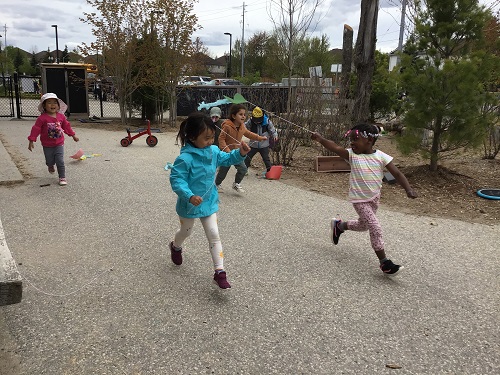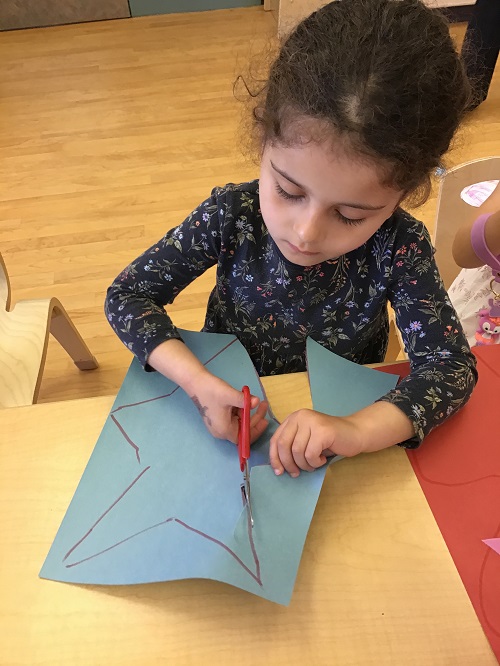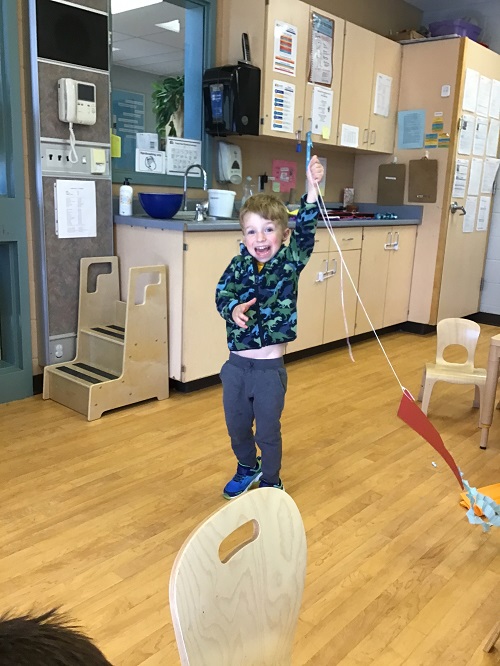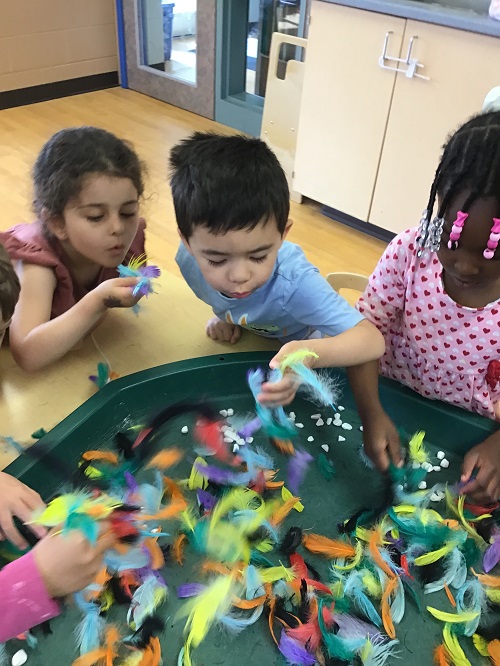One day, an educator prepared colorful feathers and some white pebbles as a provocation for the children to explore on the tuff tray. As the children were playing, they discovered that when they blew on the feathers, they would see them fly up, but the pebbles could not. They blew and blew repeatedly, and also gently threw the feathers into the air with their hands. The educator then introduced to the children that the reason why feathers and some very light objects can fly up is with the help of the power of wind, and also asked the children to think about what other light objects can fly. The children began brainstorming and answered, “Paper airplanes, wind mills, and kites.” With these ideas provided by the children, the educator decided to let the children try to make kites. The educator prepared some scissors, coloured paper and others materials, for the children to be creative with. They could choose the coloured paper they liked. The children cut the kite pattern into their own favorite shapes according to their imagination. Diana cut a pentagon and said, "This is my star kite." Brooke cut a fish-shaped one and said, "My kite is a fish." Cillian is the youngest child in our class. He worked hard at making his, and he was very happy to show everyone the kite he cut. There were many children like Graeme, Moyosola, Isaac Vesper, Kimmie who also cut out the shapes they wanted as their kites. Then with the help of the educator, they created long tails with yarn on their kites. Some children flew them in the classroom. At this time, educator Sue said, "Where do you think is the best place to fly these kites?" The children said, "Outdoors." Educator Sue said, "Yes. Kites can fly because of the power of wind, and the best place is outdoors. Let's go outside and test out our kites, okay?" They happily said, "Okay." The children took the kites they made and went to the playground. They ran around happily holding the yarn of the kites, observing that although they could make the kite fly, it would not go as high in the air as they had expected. Later, educator Judy provided us with some real kites, and the children watched as the educators demonstrated how to fly them. The children also learned that flying a kite requires not only the power of the wind but also some manipulation on our part.
There are many skills that the preschoolers benefited from while kite making.
First, it helped them develop hand-eye coordination and fine motor skills. Second, by making kites by themselves, they develop creativity and imagination while promoting independence. In addition, during the kite flying process, they learned to control and observe the direction of the wind, promoting an interest in understanding nature. Most importantly, this activity can enhance children's patience and perseverance, because making and flying kites requires a certain amount of time and effort.
As the next step, we will provide the children with other objects that can fly, such as paper airplanes, wind wheels, etc. from the ideas provided by the children.













